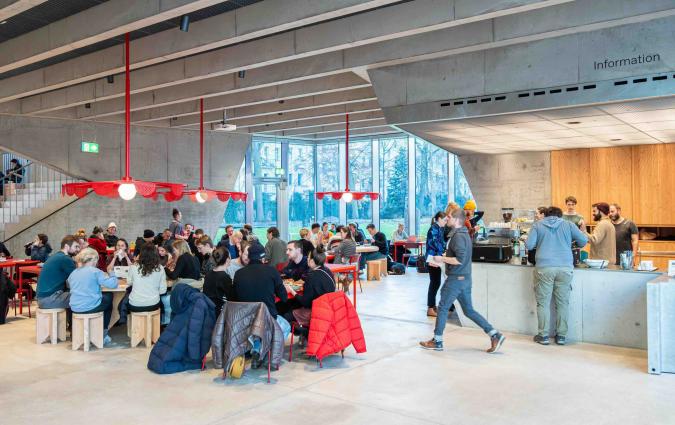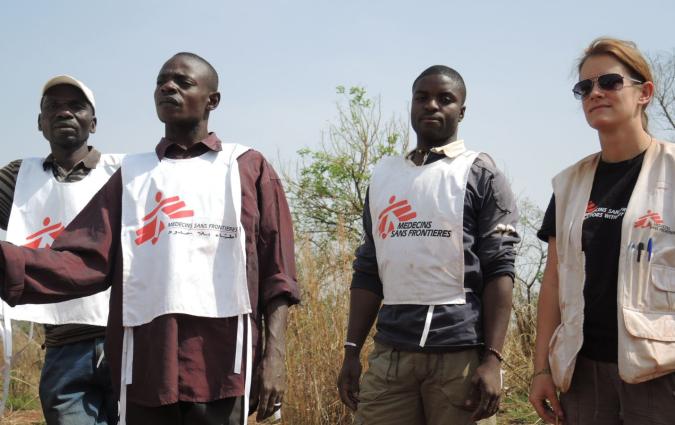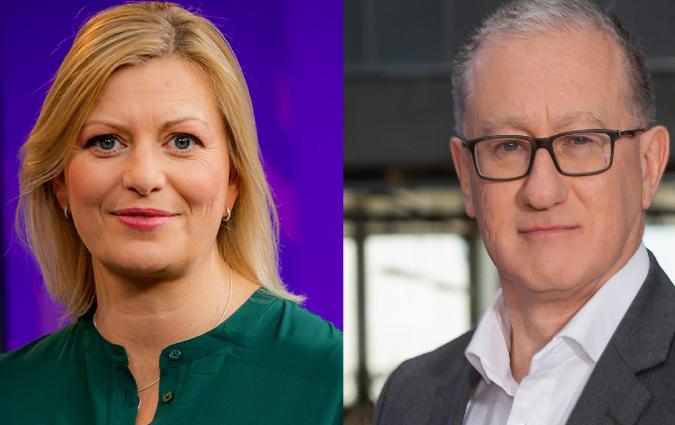Our podcast: How synergies can build a better culture across news organisations

A view of the London skyline, Britain, October 14, 2020. REUTERS/Matthew Childs
The topic
In this episode of our Future of Journalism podcast we speak to someone involved in managing the relationship between the Financial Times and its parent company Nikkei on how to build a successful partnership and manage change and culture over time.
The speakers
Joshua Ogawa is General Manager, Nikkei-FT Partnership at Nikkei Europe. He is in charge of day-to-day collaboration between Nikkei and the Financial Times, which the Japanese news organisation acquired in 2015. He ensures that the global media alliance is achieving its strategic goals and that there is open communication between London and Tokyo, liaising with editorial and commercial stakeholders on both sides. Joshua was a Visiting Fellow at the Reuters Institute in 2021.
Our host Federica Cherubini is Head of Leadership Development at the Reuters Institute for the Study of Journalism. She is an expert in newsroom operations and organisational change, with ten years' experience spanning major publishers, research institutes and editorial networks around the world.
The podcast
The transcript
Managing a major partnership ↑
Federica: Before we start, I should say that, during his fellowship, I was Joshua’s thought partner within the institute and we had several conversations about this topic. But let’s start with the basics. What was the purpose of your research during your visiting fellowship? What problem were you trying to study and address?
Joshua: Yes, of course. For those not familiar with Nikkei, we are the largest provider of business news and financial information in Japan, with a history of more than 140 years. You may have heard about the Nikkei 225 Stock Index, which is one of our many businesses. We celebrated the fifth anniversary of our partnership with the FT last year, and looked back on our journey to draw some lessons as we look to the next five years. Since 2015, we have embarked on more than 30 project to create synergies across the group.
They include colocation of offices, personnel exchange, event collaboration, joint ventures, new product development, and lots of knowledge-sharing. As you would imagine, there were hits and misses along the way. In that process, I became interested in how our peers in the news industry are handling synergies across their organisation, and really I was keen to learn from them. That’s how I came to the Reuters Institute to study.
Federica: And can you tell us a bit more about what characterises these Nikkei and FT partnerships. What shapes and form does it take on a day-to-day basis, aside from, as you mentioned, those bigger projects?
Joshua: Yes. Our partnership is rooted in our shared commitment to secure the future of quality independent business journalism. We speak different languages and we are based in different parts of the world, but we are united by this mission, and we see diversity as our strengths. We are also committed to success over the long term. The fact that the Nikkei is a private employee-owned company enables us to take a long-term view. Our response to the pandemic last year has demonstrated this. While many of our peers rushed to cut costs by large scale restructuring and job cuts, neither of us resorted to such measures.
We continue to make new investment in strategic growth areas such as the US market and content innovation. Our partnership was tested in the crisis, but we came out stronger, I think.
Leveraging synergies ↑
Federica: In your time during the fellowship, you talk a lot about synergies and the difference between transformational synergies and combinational synergies. Can you explain to us what it means?
Joshua: Nikkei has three goals in mind when we forged the global media alliance with the FT. One was to expand Nikkei’s reach and influence in Asia through our English language publication – ‘Nikkei Asia’ – which provides news and analysis on Asian businesses, economies and politics by drawing on the editorial resource and expertise of the FT. Second was to expand FT to its full potential by making targeted new investment in the newsroom and technology. Third was to accelerate Nikkei’s own digital transformation by taking a page out of FT’s playbook.
Combination of synergies are the synergies associated with bringing two organisations together and eliminating redundancy. I see this cost synergy being the main driver behind many media M&A deals in the US in recent years. For us, it’s about going after the transformational opportunities that came with the acquisition. Nikkei was already a leader in building digital subscription businesses in Japan, but today we are increasingly driven by customer-centric and data-driven strategies. In the words of our former chairman, who made this small bet, “Without the FT, it would not have been possible for us to transform ourselves as we have.”
Challenges of collaboration ↑
Federica: During the fellowship, you interviewed several executives and media managers and other companies – as you said, it's one of the things you really were curious to do – that are handling similar collaboration across companies and as kind of synergies. What did you learn? What are the common challenges that you’ve seen emerge?
Joshua: Synergy is not easy. That’s what they all said. Most people I interviewed are agents of change in their organisation. They’re often in a very tough position, because not everyone likes change. Those who have things to lose from the new system or the new way of working will be your bitter enemies. And even those who stand to gain will only give you lukewarm support, because they want to see if you’re going to succeed or not. A lot of synergies initiatives come from the top of an organisation but people have different priorities and commitments.
So how to balance these competing goals and priorities is another challenge. And if leadership is ambivalent or send mixed signals, you only obey the message you want to hear or the ones that are easier for you. And of course, one of the most difficult stumbling blocks in any post-merger integration process is about culture.
People: the key to success ↑
Federica: And what is key to success? How do you come to balance these challenges? How do you face them?
Joshua: Yeah, I think every successful collaboration begins with finding the right people to work with. So create a map of talent across your organisation and make it accessible, and making as many connections as possible. Knowledge-sharing groups are a great platform to connect like-minded people, and I found many organisations I researched have a lot of knowledge-sharing groups in-place. Once connections are made, make sure that people do talk to each other. Foster psychological safety, so everyone feels safe to speak up with the ideas, questions, concerns, or even mistakes. Also, create new rituals to highlight and celebrate example of good work so that people can see the benefit of working together.
Federica: Was there any example around this creativity, collaboration, celebration, connection? Was there anything that any of the companies you spoke to was doing that you thought was particularly a good way to implement these strategies?
Joshua: Yeah. One of the company I talked to, they had an annual award on different topics, but one of which was about collaboration. And they really celebrated the work the different newsrooms had during the year, and I thought that was something we should really follow suit.
Federica: Based on your own experience and the conversation you had during the fellowship, if you were to give recommendations to who’s listening to us about how to build a successful collaboration and partnership, what is key to do it well?
Joshua: Well, building successful collaborations and partnerships requires time, resources, and most of all, patience, I think. It’s worth noting that you don’t need or you can’t have synergy in everything and that collaboration is a means to an end and not an end itself. So you need clear leadership from the very top to say what we want to achieve and communicate the vision over and over through all layers of the organisation. So it’s the relentless conversation that can really connect a big company.
It’s a huge challenge, but I strongly believe that two heads are better than one, especially when no one has clear answers to all the challenges we face today. And I’m still learning every day.
Federica: Yes, that’s very important. I like the ‘two heads are better than one’. Joshua, thank you so much for joining us today.







